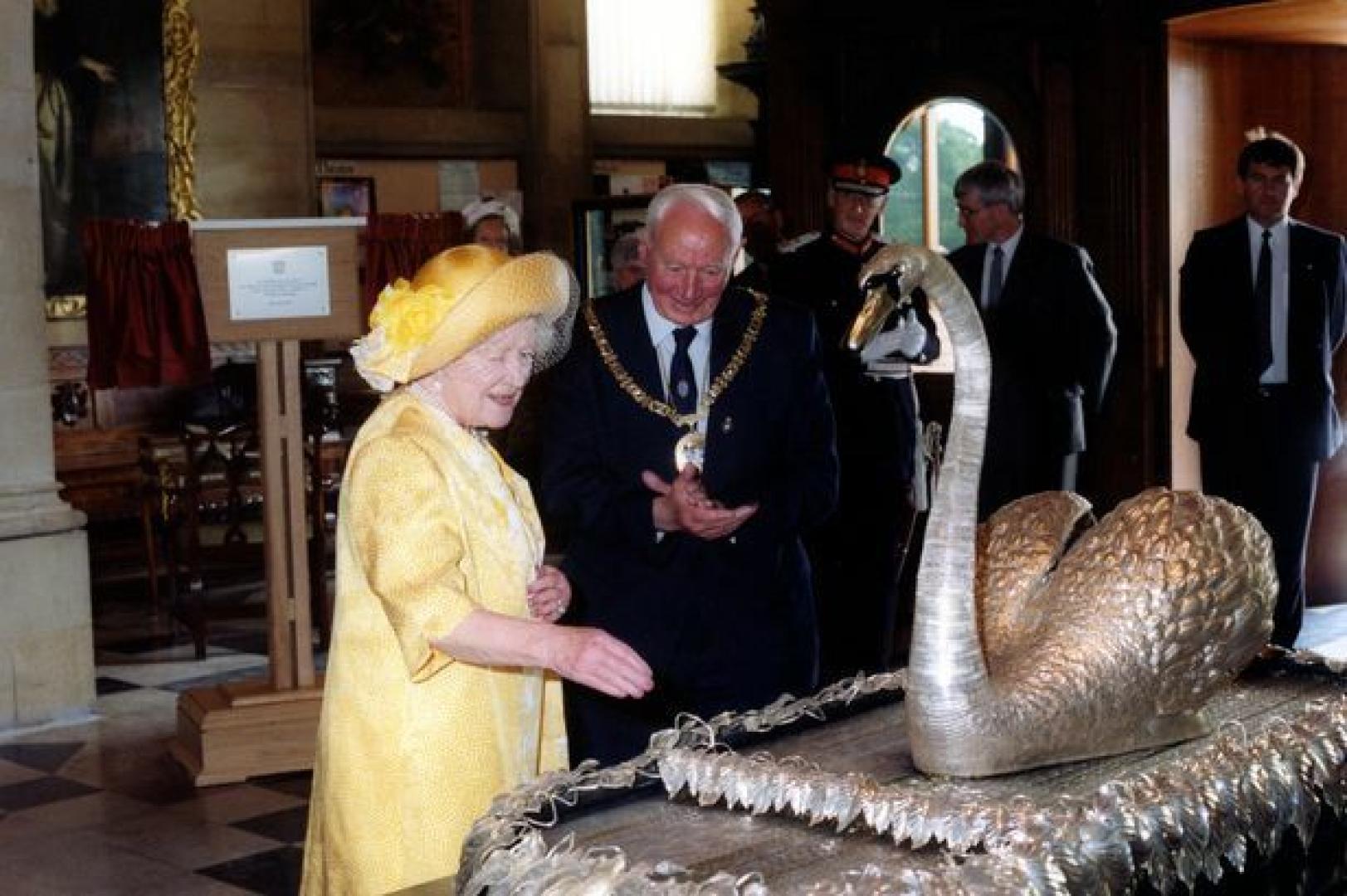As The Bowes Museum launches a crowdfunding appeal to help pay for the restoration of the Silver Swan, David Phillips considers how the automaton has been displayed down the years
Ever since the museum opened to the public in 1892 curators and trustees have wrestled with how best to display such a wide range of objects.
Part of that challenge over the years has been how the Silver Swan was perceived. It’s journey from curious mechanical toy, to coin-in-the-slot entertainment, to iconic object has seen it located in different sites and against different backdrops in the museum.
At one point, it was displayed in front of a taxidermy cabinet of British birds – said in 1906 to be the work of “a good, average bird stuffer of the better class” . A report to the trustees added that there was “an unnatural tinselly effect to the birds” .
This tinselly theatricality from the juxtaposition of the Silver Swan with stuffed birds was probably more for aesthetic grounds than on scientific accuracy. The 1911 guide book says: “In the natural history gallery… in the centre of the room stands a curious mechanical toy.”
By 1916 a railwayman’s coat had joined the exhibits in the gallery. This embraced the “cabinet of curiosities” approach – and was a way to highlight the element of fun, randomness and eclecticism of the collection.
By 1939, the Silver Swan had been moved back into a metalwork gallery. Now its metal construction predominated: its playfulness played down.
No matter its categorisation, the Silver Swan was luring visitors away from ‘real art’. A report in the Teesdale Mercury quoted a trustee from a 1932 reception celebrating the acquisition of some watercolours. He endorsed attempts by the curator to “make the museum something more than a mere place of show” but added that it would be better if visitors “came to trace the origins of the beautiful pictures and other articles” .
These sentiments were reiterated by an alderman, who regretted hearing visitors speak as if the best thing they saw was the Silver Swan.
In 1936 a BBC broadcast featuring the museum ignored the swan. Post-Second World War listeners to the BBC were advised that it was “the tapestries that impress you first, of course” . During the Second World War, the Silver Swan had been dismantled whilst the museum was used by a school. It was later discovered by the curator’s daughter in the museum store in its dismantled state.
In 1948 the Silver Swan was displayed in the entrance hall in working order, having been repaired by one of the attendants. It was now the first object that visitors encountered on entering the museum and its description remained “a curious toy” .
For a while, it was re-united with the stuffed birds and joined by a few other mammals, as well as other clockwork toys, including a mechanical mouse, a spinning lady and a knife grinder.
This assortment of objects was designated as a Children’s Room with the following explanation: “dolls and houses for the girls, and models of engines and ships for the boys… and the grandest toy of all – a life-size silver swan” (presumably for both boys and girls).
By the 1970s, the swan had been relocated to the entrance hall and this time with a “coin-in-the-slot” mechanism. It moved upstairs in 2013 to the central picture gallery, so that groups could see it. By now it was beginning to take on iconic status. A guide book from that time stated it was “perhaps the best known and best loved object in the museum” and the museum’s website said it “epitomised a spirit of fun which redefined the museum as a treasure house singing and dancing into the 21st century” .
Helping to confirm the swan’s rise to fame, was the homage paid to it by the Queen Mother. She saw it at a time when it had ceased to function (1969) and again at a later visit when it was in working order. Her visits, given her Bowes-Lyon connection, were always a cause of official celebration at the museum.
The Silver Swan’s identity has over the years it has lived at the Bowes has shifted between fairground amusement and serious museum exhibit. That ambiguity which is encompassed by its design and function is an example of the treasures, oddities and displaced objects which the late geographer YF Tuan explored in his 1977 book Space and Place.
He considered how people form emotional connections and attachments to ‘place’ and that what begins as undifferentiated ‘space’ over time becomes ‘place’ as we get to know it better and assign it value.
The swan’s intricate and multi-faceted nature of its making and its various classifications as a metallic object, curious toy, bird, and coin-in-the-slot machine is why its display has been so different.
It may be seen as a metaphor for the museum’s entire collection in that it encompasses aesthetics, souvenirs, fun, and curiosity. It is a complex work of art: the product of skilled making and yet its replication of a living creature’s movement may create discomfort in the spectator. It has inherent theatricality, yet it contains serious engineering and exquisite silversmithing.
The motivations collecting and display influences the status of the objects and visitors’ reactions to them.
So where does it belong? As an object of fun and delight, or is it more at home amongst the fine art Old Masters…? Maybe the answer is, a bit of both.






